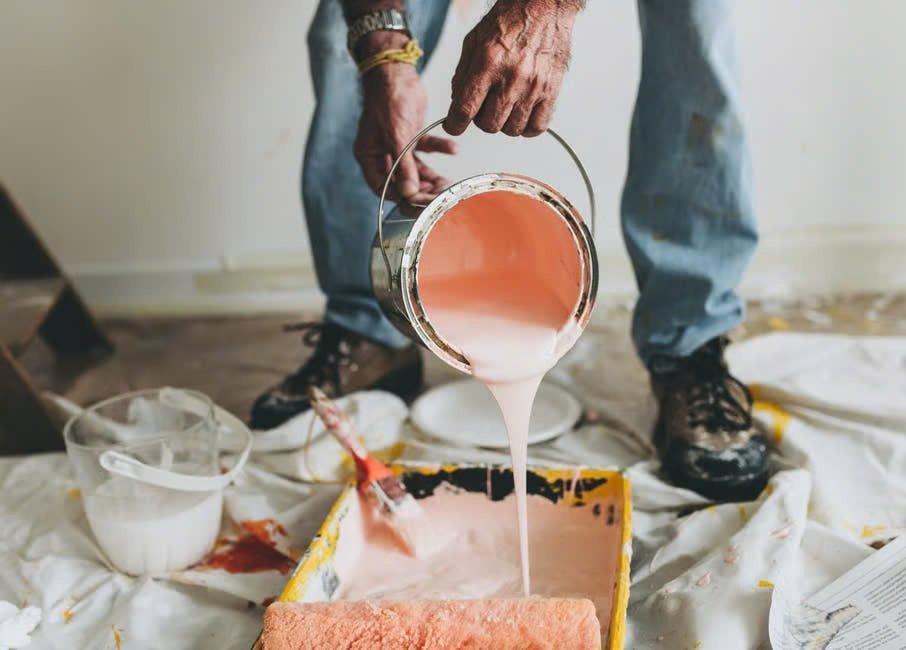Understanding Paint Conditioners: Enhancing Your Painting Experience
Discover how paint conditioners can improve your painting projects with smoother application and a flawless finish. Shop high-quality paint conditioners at Paintlab today!
At Paintlab, we know that achieving the perfect finish on your painting projects requires not just the right paint but also the right additives. Paint conditioners are among the most important of these additives, playing a crucial role in improving the performance and application of paint. This comprehensive guide will explore what paint conditioners are, their benefits, types, and how to use them effectively.
What Are Paint Conditioners?
Paint conditioners are additives mixed with paint to enhance its properties and improve application. They are designed to modify the paint's viscosity, improve flow and leveling, and prevent issues such as brush marks and roller stippling. By altering the physical properties of paint, conditioners can make it easier to work with and result in a smoother, more professional finish.
Benefits of Using Paint Conditioners
1. Improved Flow and Leveling
One of the primary benefits of paint conditioners is their ability to improve the flow and leveling of paint. This means the paint spreads more evenly and smoothly across the surface, reducing the appearance of brush strokes and roller marks. This is particularly beneficial for achieving a flawless finish on large, flat surfaces.
2. Enhanced Workability
Paint conditioners extend the open time of paint, allowing it to remain workable for a longer period. This is especially useful when working in warm or dry conditions where paint can dry too quickly, leading to an uneven finish.
3. Reduced Lap Marks
Lap marks occur when wet paint is applied over paint that has already begun to dry, resulting in visible lines or streaks. By slowing down the drying process, paint conditioners help prevent lap marks, ensuring a uniform appearance.
4. Improved Adhesion
Some paint conditioners are formulated to enhance the adhesion of paint to the substrate, particularly on difficult surfaces. This can improve the durability and longevity of the paint job.
5. Easier Application
Conditioners make paint easier to apply, whether you're using a brush, roller, or sprayer. They help the paint glide on smoothly, reducing the effort required and making it easier to achieve a professional finish.
Types of Paint Conditioners
1. Latex Paint Conditioners
Latex paint conditioners are designed specifically for water-based (latex) paints. They improve the flow and leveling of the paint, making it easier to apply and resulting in a smoother finish. Popular latex paint conditioners include brands like Floetrol and XIM.
2. Oil-Based Paint Conditioners
Oil-based paint conditioners are formulated for use with oil-based paints and varnishes. They help reduce brush marks and improve the overall finish. Penetrol is a well-known oil-based paint conditioner that is widely used by professionals.
3. Universal Paint Conditioners
Universal paint conditioners can be used with both water-based and oil-based paints. They offer versatility and are a convenient option for those who work with different types of paints. These conditioners enhance the flow and leveling of various paint types, ensuring consistent results.
How to Use Paint Conditioners
1. Read the Instructions
Always start by reading the manufacturer's instructions on the paint conditioner. Different products may have specific guidelines for use, including the recommended amount to add to the paint.
2. Mix Thoroughly
Add the paint conditioner to the paint in the recommended ratio. It's important to mix thoroughly to ensure the conditioner is evenly distributed throughout the paint. This can be done using a paint stirrer or a mechanical mixer for larger quantities.
3. Test Before Application
Before applying the conditioned paint to your entire project, it's a good idea to test it on a small, inconspicuous area. This will allow you to see how the paint behaves and ensure you are satisfied with the finish.
4. Adjust as Needed
Depending on the results of your test, you may need to adjust the amount of conditioner. Adding more can further improve flow and leveling, but be careful not to overdo it, as this can alter the paint's color and finish.
5. Apply the Paint
With the conditioner mixed in, apply the paint as you normally would. You'll notice it spreads more smoothly and evenly, making it easier to achieve a professional-looking finish.
Conclusion
Paint conditioners are a valuable tool for anyone looking to enhance their painting projects. By improving the flow, leveling, and workability of paint, they make it easier to achieve a flawless finish. Whether you're a professional painter or a DIY enthusiast, incorporating paint conditioners into your toolkit can elevate the quality of your work.
At Paintlab, we offer a wide range of paint conditioners suitable for various types of paints and projects. Explore our selection and discover how these additives can make your painting experience smoother and more enjoyable. Contact us for expert advice and tips on choosing the right products for your needs.













